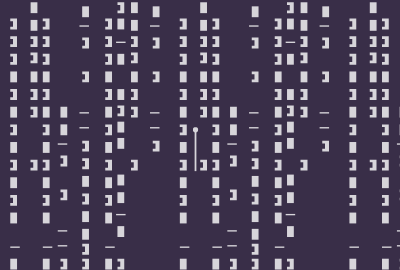
day21
设计模式
什么是设计模式
一套被反复使用、多数人知晓的、经过分类编目的、代码设计经验的总结
可以简单理解为特定问题的固定解决方法
好处
使用设计模式是为了可重用代码、让代码更容易被他人理解、保证代码可靠性、重用性
设计模式种类
创建型模式,共五种
工厂方法模式、抽象工厂模式、单例模式、建造者模式、原型模式 (简单工厂模式)
结构型模式,共七种
适配器模式、装饰者模式、代理模式、外观模式、桥接模式、组合模式、享元模式
行为型模式,共十一种
策略模式、模板方法模式、观察者模式、迭代子模式、责任链模式、命令模式、备忘录模式、状态模式、访问者模式、中介者模式、解释器模式
简单工厂模式
//Clothes
public abstract class Clothes {
//准备
public abstract void prepare();
//制作
public abstract void make();
//打包
public abstract void box();
}
//夹克
public class Jacket extends Clothes{
@Override
public void prepare() {
System.out.println("开始准备夹克");
}
@Override
public void make() {
System.out.println("开始制作夹克");
}
@Override
public void box() {
System.out.println("开始打包夹克");
}
}
//裙子
public class Skirt extends Clothes{
@Override
public void prepare() {
System.out.println("开始准备裙子");
}
@Override
public void make() {
System.out.println("开始制作裙子");
}
@Override
public void box() {
System.out.println("开始打包裙子");
}
}
//裤子
public class Trousers extends Clothes{
@Override
public void prepare() {
System.out.println("开始准备裤子");
}
@Override
public void make() {
System.out.println("开始制作裤子");
}
@Override
public void box() {
System.out.println("开始打包裤子");
}
}
//T恤
public class Tshirt extends Clothes{
@Override
public void prepare() {
System.out.println("开始准备T恤");
}
@Override
public void make() {
System.out.println("开始制作T恤");
}
@Override
public void box() {
System.out.println("开始打包T恤");
}
}
//工厂类
public class ClothesFactory {
private static Properties properties;
static {
try {
properties = new Properties();
FileInputStream fis = new FileInputStream("src\\week05\\day02\\clothes\\clothes.properties");
properties.load(fis);
fis.close();
} catch (Exception e) {
System.out.println("加载配置文件失败");
}
}
public static Clothes createClothes(int type){
Clothes clothes = null;
// if(type == 1){
// clothes = new Jacket();
// }else if (type == 2){
// clothes = new Trousers();
// }else if(type == 3){
// clothes = new Tshirt();
// }
if(properties.containsKey(Integer.toString(type))){
try {
String value = properties.getProperty(Integer.toString(type));
Class<?> class1 = Class.forName(value);
clothes = (Clothes) class1.newInstance();
} catch (Exception e) {
throw new RuntimeException(e);
}
}
if(clothes != null){
clothes.prepare();
clothes.make();
clothes.box();
}
return clothes;
}
}
//配置文件
1=week05.day02.clothes.Jacket
2=week05.day02.clothes.Trousers
3=week05.day02.clothes.Tshirt
4=week05.day02.clothes.Skirt
//测试类
public class Test {
public static void main(String[] args) {
System.out.println("----1.夹克---2.裤子---3.T恤----");
System.out.println("请选择");
Scanner sc = new Scanner(System.in);
int type = sc.nextInt();
Clothes clothes = ClothesFactory.createClothes(type);
if(clothes != null){
System.out.println("购买成功");
}else {
System.out.println("购买失败");
}
}
}
单例模式
单例(Singleton):只允许创建一个该类的对象。
实现单例三个步骤
- 私有化构造方法
- 在类内部创建一个对象
- 在类中添加一个公开的方法,返回单例对象
方式1:饿汉式(类加载时创建,天生线程安全)
public class SingleTon1 {
/**
* 饿汉式
* 1. 私有化构造方法
* 2. 在类内部创建一个对象
* 3. 在类中添加一个公开的方法,返回单例对象
*/
private SingleTon1() {
}
private static final SingleTon1 Instance = new SingleTon1();
public static SingleTon1 getInstance(){
return Instance;
}
public void method1(){
System.out.println("method1");
}
public void method2(){
System.out.println("method2");
}
}
方式2:懒汉式(使用时创建,线程不安全,需加同步)
public class SingleTon2 {
private SingleTon2(){}
private static volatile SingleTon2 instance;
public static SingleTon2 getInstance(){
//双重检查锁:提高效率 double check lock(DCL)
if(instance == null) {
synchronized (SingleTon2.class) {
if(instance == null){
instance = new SingleTon2();
}
}
}
return instance;
}
}
优化懒汉式(多线程操作下防止指令重排)
- volatile:保证内存可见性,禁止指令重排
- as if serial:单线程情况,无论怎么指令重排,保证结果不变
- happens-before规则:如果操作a,必须要在操作b之前执行,并且操作a的结果对操作b是可见的
- 常见规则:
- 程序顺序规则 int a = 10; int b = 20; int c = a+b;
- 传递性规则 a happens-before b b happens-before a
- 监视器锁规则 synchronized
- volatile 变量规则
- 线程start()规则
- 线程join()规则
- 线程interrupt()规则
- 对象终结规则
方式3:静态内部类写法(使用时创建,线程安全)
public class SingleTon3 {
private SingleTon3() {
}
private static class Holerd{
private static SingleTon3 instance = new SingleTon3();
}
public static SingleTon3 getInstance(){
return Holerd.instance;
}
public void method1(){
System.out.println("method1");
}
public void method2(){
System.out.println("method2");
}
}
枚举类
什么是枚举
- 枚举是一个引用类型,枚举是一个规定了取值范围的数据类型
注意事项
- 定义枚举使用enum关键字
- 枚举中主要包含常量,只写常量名,多个常量之间用逗号隔开,最后分号可写可不写,推荐写
- 枚举也可以包含属性和方法、私有构造方法,必须在常量后面
枚举好处
- 枚举变量只能使用枚举中常量赋值,不能使用其他数据,提高程序安全性
枚举本质
- 枚举是一个最终类,并继承Enum抽象类
- 枚举中常量是当前类型的静态常量
注解
什么是注解
- 注解(Annotation)是代码里的特殊标记, 程序可以读取注解,一般用于替代配置文件
- 属于引用数据类型
注意事项
- 定义注解使用@interface关键字
- 注解中只能包含公开属性,属性后面要写小括号,使用default关键字赋默认值
- 如果属性名是value,赋值时可以省略属性名
注解应用
- 注解的典型应用是:可以通过反射技术去得到类里面的注解,以决定怎么去运行类
常见注解:@Override、@Deprecated
注解属性类型
- String类型
- 基本数据类型
- Class类型
- 枚举类型
- 注解类型
- 以上类型的一维数组
元注解
用来描述注解的注解。
@Retention:用于指定注解可以保留的域
RetentionPolicy.CLASS
注解记录在class文件中,运行Java程序时, JVM不会保留,此为默认值
RetentionPolicy.RUNTIME
注解记录在 class文件中,运行Java程序时,JVM会保留,程序可以通过反射获取该注解
RetentionPolicy.SOURCE
编译时直接丢弃这种策略的注解
@Target
- 指定注解用于修饰类的哪个成员
注解本质:接口、属性变成抽象方法
JDK8新特性
Lambda表达式
Lambda引入了新的操作符:->(箭头操作符),->将表达式分成两部分
- 左侧:(参数1,参数2…),表示方法参数列表
- 右侧:{}内部是方法体
注意事项
- 形参列表的数据类型会自动推断
- 如果形参列表为空,只需保留( )
- 如果形参只有1个,( )可以省略,只需要参数的名称即可
- 如果执行语句只有一句,且无返回值,{}可以省略,若有返回值,则若想省去{},则必须同时省略return,且执行语句也保证只有一句
- Lambda不会生成一个单独的内部类文件
函数式接口
- 如果一个接口只有一个抽象方法,则该接口称之为函数式接口,函数式接口可以使用Lambda表达式,Lambda表达式会被匹配到这个抽象方法上
- @FunctionalInterface 注解检测接口是否符合函数式接口
常见函数式接口
| 函数式接口 | 参数类型 | 返回类型 | 说明 |
| :----------------------: | :------: | :------: | :----------------------------------------------------------: |
| Consumer
public class TestLambda {
public static void main(String[] args) {
new Thread(()-> System.out.println("赵云!!!")).start();
Comparator<Integer> comparator = (a, b) -> a - b;
//消费型接口
happy(d-> System.out.println("花费:"+d),2000);
//供给型接口
System.out.println(Arrays.toString(getNum(() -> new Random().nextInt(100),10)));
//函数型接口
System.out.println(handleString(s -> s.toUpperCase(),"hello"));
//断言型接口
List<String> list = new ArrayList<>();
list.add("zhang");
list.add("zhao");
list.add("li");
List<String> lis = filter(s -> s.startsWith("zhao"), list);
System.out.println(lis);
}
//消费型接口
public static void happy(Consumer<Double> con,double money){
con.accept(money);
}
//供给型接口
public static int[] getNum(Supplier<Integer> sup, int count){
int[] nums = new int[count];
for (int i = 0; i < nums.length; i++) {
nums[i] = sup.get();
}
return nums;
}
//函数型接口
public static String handleString(Function<String,String> fun,String s ){
return fun.apply(s);
}
//断言型接口
public static List<String> filter(Predicate<String> pre, List<String> list){
List<String> res = new ArrayList<>();
for (String s : list) {
if(pre.test(s)){
res.add(s);
}
}
return res;
}
}
方法引用
方法引用是Lambda表达式的一种简写形式
条件
- Lambda表达式方法体中只是调用一个特定的已经存在的方法
- 方法的参数和返回值和接口一致
常见形式
对象::实例方法
类::静态方法
类::实例方法
类::new
元素类型[]::new
Stream流
流(Stream)与集合类似,但集合中保存的是数据,而Stream中保存对集合或数组数据的操作
Stream特点
- Stream 自己不会存储元素
- Stream 不会改变源对象。相反,他们会返回一个持有结果的新Stream
- Stream 操作是延迟执行的,会等到需要结果的时候才执行
Stream操作步骤
- 创建流
- 通过Collection集合的stream()或parallelStream()方法
- 通过Arrays类的stream()方法。
- 通过Stream接口的of()、iterate()、generate()方法
- 通过IntStream、LongStream、DoubleStream接口中的of、range、rangeClosed方法
public class TestStream1 {
public static void main(String[] args) {
ArrayList<String> list = new ArrayList<>();
list.add("a");
list.add("d");
list.add("c");
list.add("b");
Stream<String> stream = list.stream();
stream.filter(s -> s.startsWith("a"))
.forEach(System.out::print);
System.out.println();
System.out.println("-------Arrays.stream-----------");
IntStream stream1 = Arrays.stream(new int[]{23, 345, 23, 645, 22, 1});
stream1.sorted()
.forEach(System.out::print);
System.out.println();
System.out.println("--------Stream.of----------");
Stream<int[]> stream2 = Stream.of(new int[]{23, 345, 23, 645, 22, 1});
stream2.sorted()
.forEach(System.out::print);
System.out.println();
System.out.println("--------无限迭代流----------");
Stream<Integer> stream3 = Stream.iterate(0, x -> x = x + 2);
stream3.limit(10)
.forEach(System.out::print);
System.out.println();
System.out.println("--------无限生成流----------");
Stream<Integer> stream4 = Stream.generate(() -> new Random().nextInt(100));
stream4.limit(10)
.forEach(System.out::print);
System.out.println();
System.out.println("--------range----------");
IntStream range = IntStream.range(0,100);
range.forEach(System.out::print);
System.out.println();
System.out.println("---------rangeclosed---------");
IntStream rangeClosed = IntStream.rangeClosed(0, 100);
rangeClosed.forEach(System.out::print);
}
}
中间操作
在一个或多个步骤中,将初始Stream转化到另一个Stream的中间操作
filter、limit、skip、distinct、sorted
map
parallel
public class TestStream2 {
public static void main(String[] args) {
Employee e1 = new Employee("赵云", 18, 400200);
Employee e2 = new Employee("关羽", 38, 50000);
Employee e3 = new Employee("张飞", 38, 20000);
Employee e4 = new Employee("马超", 28, 13000);
Employee e5 = new Employee("黄忠", 48, 14000);
Employee e6 = new Employee("黄忠", 48, 14000);
List<Employee> list = new ArrayList<>();
list.add(e1);
list.add(e2);
list.add(e3);
list.add(e4);
list.add(e5);
list.add(e6);
//过滤
System.out.println("---------filter------------");
list.stream()
.filter(e -> e.getSalary() >= 20000)
.forEach(System.out::println);
System.out.println("--------");
list.stream()
.filter(e -> e.getAge() >= 28)
.forEach(System.out::println);
//限制范围
System.out.println("---------limit------------");
list.stream()
.limit(2)
.forEach(System.out::println);
//跳过
System.out.println("---------skip------------");
list.stream()
.skip(2)
.limit(2)
.forEach(System.out::println);
//去重 hashcode equals
System.out.println("---------distinct------------");
list.stream()
.distinct()
.forEach(System.out::println);
//排序
System.out.println("---------sorted------------");
list.stream()
.distinct()
.sorted((o1,o2) -> o1.getAge() - o2.getAge())
.forEach(System.out::println);
//映射
System.out.println("---------map------------");
list.stream()
.map(Employee::getName)
.forEach(System.out::println);
System.out.println("---------parallel------------");
list.stream()
.parallel()
.forEach(System.out::println);
}
}
终止操作
使用一个终止操作来产生一个结果。该操作会强制之前的延迟操作立即执行,在此之后,该Stream就不能使用了
forEach、min、max、count
reduce、collect
public class TestStream3 {
public static void main(String[] args) {
Employee e1 = new Employee("赵云", 18, 400200);
Employee e2 = new Employee("关羽", 38, 50000);
Employee e3 = new Employee("张飞", 38, 20000);
Employee e4 = new Employee("马超", 28, 13000);
Employee e5 = new Employee("黄忠", 48, 14000);
Employee e6 = new Employee("黄忠", 48, 14000);
List<Employee> list = new ArrayList<>();
list.add(e1);
list.add(e2);
list.add(e3);
list.add(e4);
list.add(e5);
list.add(e6);
System.out.println("---------forEach------------");
list.stream()
.forEach(System.out::println);
System.out.println("---------min------------");
System.out.println(list.stream()
.min(Comparator.comparingInt(Employee::getAge)));
System.out.println("---------max------------");
System.out.println(list.stream()
.max(Comparator.comparing(Employee::getSalary)));
//获取元素个数
System.out.println("---------count------------");
System.out.println((long) list.size());
//统计规约
System.out.println("---------reduce------------");
System.out.println(list.stream()
.map(Employee::getSalary)
.reduce(Double::sum));
//收集 把元素放入list集合
System.out.println("---------collect------------");
System.out.println(list.stream()
.map(Employee::getName)
.collect(Collectors.toList()));
}
}
新时间API
之前时间API存在问题:线程安全问题、设计混乱;可变的
本地化日期时间API
- LocalDate
- LocalTime
- LocalDateTime:类似于Calendar 创建:LocalDateTime now = LocalDateTime.now();
方法
- 获取getYear()
- 修改withYear()
public class TestLocalDataTime {
public static void main(String[] args) {
//LocalDataTime:本地日期时间
//LocalData:本地日期
//LocalTime:本地时间
LocalDateTime now = LocalDateTime.now();
System.out.println("今天是: " + now);
LocalDateTime yesterday = now.minusDays(1);
System.out.println("昨天是:" + yesterday);
LocalDateTime tomorrow = now.plusDays(1);
System.out.println("明天是:" + tomorrow);
LocalDateTime localDateTime = LocalDateTime.of(2002, 8, 15, 15, 20, 30);
System.out.println("创建时间是: " + localDateTime);
//获取时间信息
System.out.println(now.getYear());
System.out.println(localDateTime.getHour());
}
}
Instant:时间戳,类似于Date
方法:
- 创建:Instant now = Instant.now();与中国时间少8小时
- now.toEpochMilli() 获取毫秒值,1970.1.1至今
- now.minus() 减毫秒值
- now.plus() 加毫秒值
public class TestInstant {
public static void main(String[] args) {
Instant now = Instant.now();
System.out.println("今天是: " + now);
System.out.println(now.toEpochMilli());
Instant yesterday = now.minusSeconds(24*60*60);
System.out.println("昨天是:" + yesterday);
Instant tomorrow = now.plusSeconds(24*60*60);
System.out.println("明天是:" + tomorrow);
Instant.parse("2023-08-15T09:11:17.512487100Z");
}
}
ZoneId:时区
public class TestZonId {
public static void main(String[] args) {
Set<String> availableZoneIds = ZoneId.getAvailableZoneIds();
for (String availableZoneId : availableZoneIds) {
System.out.print(availableZoneId+"\t");
}
//获取默认时区
ZoneId zoneId = ZoneId.systemDefault();
System.out.println("-----LocalDataTime--->Instant--->Date---------");
LocalDateTime now = LocalDateTime.now();
Instant instant = now.atZone(ZoneId.systemDefault()).toInstant();
Date date = Date.from(instant);
System.out.println(date);
System.out.println("------Instant--->Date--->LocalDataTime------");
Instant instant1 = date.toInstant();
LocalDateTime localDateTime = instant1.atZone(ZoneId.systemDefault()).toLocalDateTime();
System.out.println(localDateTime);
}
}
Date、Instant、LocalDateTime的转换
System.out.println("-----LocalDataTime--->Instant--->Date---------");
LocalDateTime now = LocalDateTime.now();
Instant instant = now.atZone(ZoneId.systemDefault()).toInstant();
Date date = Date.from(instant);
System.out.println(date);
System.out.println("------Instant--->Date--->LocalDataTime------");
Instant instant1 = date.toInstant();
LocalDateTime localDateTime = instant1.atZone(ZoneId.systemDefault()).toLocalDateTime();
System.out.println(localDateTime);
DateTimeFormatter:格式化类
public class TestDateTimeFormater {
public static void main(String[] args) {
DateTimeFormatter dtf = DateTimeFormatter.ofPattern("yyyy-MM-dd HH:mm:ss");
LocalDateTime now = LocalDateTime.now();
//时间->字符串
String format = now.format(dtf);
System.out.println(format);
//字符串->时间
LocalDateTime parse = LocalDateTime.parse("2002-2-2 12:12:12");
System.out.println(parse);
}
}
JDK9+新特性
1、JDK9
2017年9月发布JDK9开始,Oracle对于JDK的更新就类似坐火箭一样,非常的迅速。 从JDK9JDK中不再提供独立的jre。 下面我们来看下JDK9添加的新特性。
1.1 接口变化
JDK9中,接口中可以包含私有方法,在JDK8版本中是可以包含默认方法和静态方法的。
1.2 Java9 新特性之 String 底层存储结构更换
JDK8 之前 String 的底层结构类型都是 char [] , 但是 JDK9 就替换成 byte [] 这样来讲,更节省了空间和提高了性能。
1.3 Java9 新特性之异常处理 try 升级
//首先看下 jdk6,7,8,9 的 try catch 的比较
//Java6 处理方式:每一个流打开的时候都要关闭
@Test
public void test6(){
InputStreamReader reader = null;
try{
reader = new InputStreamReader(System.in);
reader.read();
}catch (IOException e){
e.printStackTrace();
}finally {
if (reader != null){
try {
reader.close();
} catch (IOException e) {
e.printStackTrace();
}
}
}
}
//java7和8及 每一个流打开的时候都要关闭,但是在try的括号中来进行关闭
@Test
public void test7_8(){
try(InputStreamReader reader =new InputStreamReader(System.in)){
reader.read();
}catch (IOException e){
e.printStackTrace();
}
}
//java9及 每一个流打开的时候都要关闭,但是在try的括号中来进行关闭,在
//java8的基础上进一步升级 直接在try括号中直接写入 变量就好,如果有多个流,就用分号隔开
//try(reader;writer){}
@Test
public void test9(){
InputStreamReader reader =new InputStreamReader(System.in);
try(reader){
reader.read();
}catch (IOException e){
e.printStackTrace();
}
}
1.4 集合添加了of方法
public class Demo1 {
public static void main(String[] args) {
List<String> list = List.of("xxx", "yyy", "ccc");
list.add("zzz");
for (String s : list) {
System.out.println(s);
}
}
}
2、JDK11
JDK11于2018年09月25正式发布。
2.1 支持源文件直接运行(无需javac)
java Demo.java //自动完成Demo.java的编译和运行,没有生成class文件。如果想生成class文件,还需要使用javac编译。
2.2 关于变量定义
在JDK11中,可以使用var关键字定义变量,类似于JavaScript中var。但是var关键字使用有一些限制。 1.只能声明局部变量,不能声明成员变量 2.声明时必须赋值,而且不能分割成两句,否则无法推荐类型
2.3 针对String提供的新功能
从jdk11开始,String提供了isBlank(),strip(), stripLeading(), stripTrailing()等方法。
isBlank(); 判断是否为空,空格字符串也返回true。 isEmpty()不能判断空格字符串。
trip(); 去掉前后的半角、全角空白。strim()方法只能去掉半角空白。
stripLeading();去掉左边的空白。
stripTrailing();去掉右边的空白。
2.4 FileInputStream的增强
jdk11提供了一个关于FileInputStream文件快速复制的方法transferTo()。
2.5 针对集合功能的增强
集合提供了快速复制的方法copy()等。
2.6 对于JDK11出现的新GC(ZGC)
Java 11新增了一个全新的垃圾收集器--ZGC,它由Oracle开发,宣传可以在数TB的堆上具有非常低的暂停时间。
其实在Java10中已经有四种发布多年的垃圾收集器,并且几乎都是无限可调的,那又为什么会新增一个GC呢?换个角度看,G1是2006年时引入Hotspot VM的。当时最大的AWS实例有1 vCPU和1.7GB内存,而今天AWS很乐意租给你一个x1e.32xlarge实例,该类型实例有128个vCPU和3,904GB内存。
ZGC的设计目标是:支持TB级内存容量,暂停时间低(<10ms),对整个程序吞吐量的影响小于15%。将来还可以扩展实现机制,以支持不少令人兴奋的功能,例如多层堆(即热对象置于DRAM和冷对象置于NVMe闪存),或压缩堆。
zgc在进行对象转移的过程中,只需要修改对象指针的几个标志位,相当于g1需要在对象转移时读取对象头来说,少了内存读取的操作,速度更快。不过也正是由于zgc使用了对象指针的几个标志位来完成并发标识和并发转移等的工作,所以zgc不能压缩指针,并且只能运行在基于64位的操作系统上。
3、JDK14
3.1 swith新特性
Switch的新特性,早在JDK 12就以预览功能被引入了,最终在JDK 14成为了正式版本的功能。
其实Switch新增的特性有两个,一个就是允许每个case包含多个常量,一个就是switch-case块可以有返回值。
switch语句变成了switch表达式。并且提供支持箭头操作。
示例演示1: case包含多个变量
//JDK14之前:
int month=5;
switch (month){
case 1:
case 3:
case 5:
case 7:
case 8:
case 10:
case 12:
System.out.println("31天");
break;
case 2:
System.out.println("28天");
case 4:
case 6:
case 9:
case 11:
System.out.println("30天");
}
//JDK14之后,使用逗号隔开每个常量。
//可以把冒号优化为箭头符号,且可省略break关键字;如果有多个条语句需要加大括号。
int month=5;
switch (month){
case 1,3,5,7,8,10,12->
System.out.println("31天");
case 2 ->
System.out.println("28天");
case 4,6,9,11->
System.out.println("30天");
}
示例演示2: switch-case块可以有返回值
//JDK14之前:
int month=5;
int day;
switch (month){
case 1:
case 3:
case 5:
case 7:
case 8:
case 10:
case 12:
day=31;
break;
case 2:
day=28;
case 4:
case 6:
case 9:
case 11:
day=30;
default:
day=0;
}
System.out.println(day);
//JDK14之后
int month = 5;
int day = switch (month) {
case 1, 3, 5, 7, 8, 10, 12 -> 31;
case 2 -> 28;
case 4, 6, 9, 11 -> 30;
default -> 0;
};
System.out.println(day);
//如果有多条语句,可以使用大括号包括,并且使用yield关键字返回
//JDK14之后
int month = 5;
int day = switch (month) {
case 1, 3, 5, 7, 8, 10, 12 -> {
System.out.println("~~~31天~~~");
yield 31;
}
case 2 -> {
System.out.println("~~~28天~~~");
yield 28;
}
case 4, 6, 9, 11 -> {
System.out.println("~~~30天~~~");
yield 30;
}
default -> 0;
};
System.out.println(day);
4、JDK15、16、17
JDK 17 于2021年09月14发布,有史以来最快的Java,JDK17号称有史以来最快的Java,Java创始人高斯林推荐升级。Oracle 宣布,从 JDK 17 开始,后面的 JDK 都全部免费提供。
4.1 文本块
文本块是JDK15添加的新语法,可以用来表示任何字符串,具有更高的表达能力和更少的复杂度。文本块的开头定界符是由三个双引号字符(""")组成的序列独占一行,之后可以包含多行内容,最后跟一个结束定界符三个双引号字符。
//一行编写
String s1="line1 \nline2 \nline3\n";
System.out.println(s1);
//多行编写
String s2="line1 \n" +
"line2 \n" +
"line3 \n";
System.out.println(s2);
//文本块
String s3= """
line1
line2
line3
""";
System.out.println(s3);
4.2 instanceof模式匹配
在JDK16版本中,instanceof运算符具有模式匹配的能力。
模式匹配能够使程序的通用逻辑更加简洁,代码更加简单,同时在做类型判断和类型转换的时候也更加安全
//JDK16之前
Object obj="helloworld";
if(obj instanceof String){
String str= (String) obj;
System.out.println(str.toString());
}else{
//...
}
//JDK16之后
if(obj instanceof String str){
System.out.println(str);
}else{
//...
}
4.2 密封类
密封类(Sealed Classes)是JDK15引入的,在JDK17正式转正。密封类可以对继承或者实现他们的类进行限制。
优点:使用密封类可以限制继承该类的子类的范围,从而更加精确地控制类的继承关系,增加程序的安全性和可维护性。
例如: Person类被 sealed 修饰,只允许(permits)Male和Female类继承,继承的类必须有 final 或者 no-sealed 来修饰。 Function接口被 sealed 修饰,只允许(permits)Male和Female类实现,实现的类必须有 final 或者 no-sealed
public static void main(String[] args) {
Male male = new Male();
male.eat();
Female female = new Female();
female.eat();
}
static sealed class Person permits Male, Female {
}
static final class Male extends Person implements Function {
@Override
public void eat() {
System.out.println("eat 1");
}
}
static non-sealed class Female extends Person implements Function {
@Override
public void eat() {
System.out.println("eat 2");
}
}
sealed interface Function permits Male, Female {
void eat();
}


